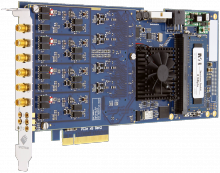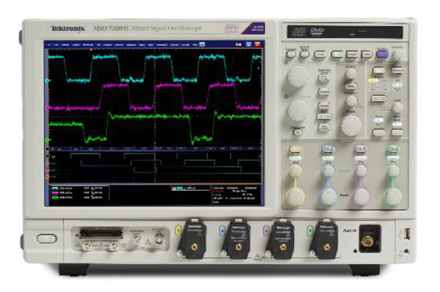Did you know? |
Only 3 manufacturers are offering oscilloscopes with a bandwidth greater than 50 GHz: Keysight, Tektronix and Teledyne LeCroy. Read more...
Latest Oscilloscope News |
In 1956 Hewlett-Packard (HP) introduced its first oscilloscope, the HP 130A with 300 kHz bandwidth. Read more...
The first commercial one box cathode-ray oscilloscope was launched in 1934 by General Radio (later GenRad). Read more...
What do you have to look for to choose the right oscilloscope for your application? Read more...
The difference between an oscilloscope and a spectrum analyzer? This article explains the difference using examples. Read more...
An oscilloscope can only measure the signal that the probe delivers to its input. Choosing the right probe is therefore essential to ensure a high signal fidelity and measurement accuracy. Read more...
There are specialized oscilloscopes available for power measurements featuring up to 8 voltage and current channels (direct high voltage and current input). Read more...
Oscilloscopes normally have 2 or 4 analog channels. Some scopes can be configured with up to 8 or even 16 channels. Other products support a coupling of several instruments to achieve up to 80 channels. Read more...
Oscilloscope Basics |
Digitizer and Oscilloscope - Equal Alternatives?
 Can a digitizer be used as an oscilloscope? What is the difference between an oscilloscope and a digitizer? Should I better use a digitizer or an oscilloscope in my next application? These are interesting questions and the best way to start to answer these is the look up the dictionary definition of an oscilloscope: "An electronic instrument used to measure changing electric voltages. It displays the waveforms of electric oscillations on a screen."
Can a digitizer be used as an oscilloscope? What is the difference between an oscilloscope and a digitizer? Should I better use a digitizer or an oscilloscope in my next application? These are interesting questions and the best way to start to answer these is the look up the dictionary definition of an oscilloscope: "An electronic instrument used to measure changing electric voltages. It displays the waveforms of electric oscillations on a screen."
Oscilloscope Background |
Digital Debugging - better using a Mixed-Signal-Oscilloscope or a Logic Analyzer?
 Today’s technology is fundamentally balanced on an increasingly fine line between the analogue and digital domains; as data speeds increase — both within and between devices — the ‘ideal world’ of fast, clean digital transitions becomes evermore difficult to achieve. This presents new and escalating challenges when verifying faster digital signals that exhibit more and more analogue-like features. As a result it is becoming necessary to remove the hard line between digital and analogue.
Today’s technology is fundamentally balanced on an increasingly fine line between the analogue and digital domains; as data speeds increase — both within and between devices — the ‘ideal world’ of fast, clean digital transitions becomes evermore difficult to achieve. This presents new and escalating challenges when verifying faster digital signals that exhibit more and more analogue-like features. As a result it is becoming necessary to remove the hard line between digital and analogue.

 How to resolve AdBlock issue?
How to resolve AdBlock issue?